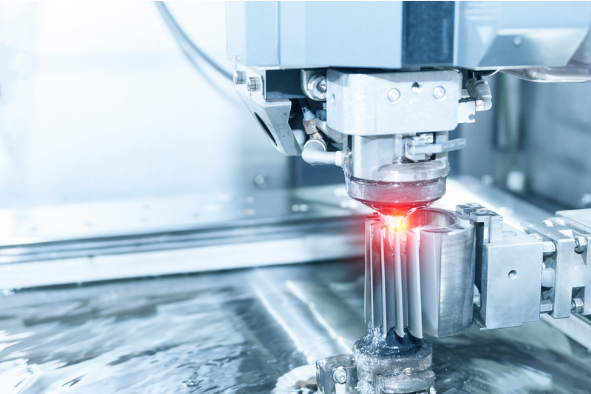As the fusion of technology and design continues to evolve, new methodologies and systems are continually emerging, reshaping everyone’s perception of the built environment. Among these groundbreaking technologies, Computer Numerical Control (CNC) machinery holds an especially notable place. Initially developed for the manufacturing industry, CNC technology is now creating a significant impact on home design and architecture.
Understanding CNC

Computer Numerical Control, or CNC, refers to a process used in the manufacturing sector that involves the use of computers to control machine tools. These tools, encompassing lathes, mills, routers, and grinders, are governed in both positioning and speed by computer software that relies primarily on G-code, a specific CNC programming language.
In essence, a CNC system provides increased precision, efficiency, repeatability, and complexity compared to traditional manual machining. Owing to these advantages, this technology has been widely adopted across various industries, including home design and architecture, where it offers significant benefits.
Applications Of CNC In Home Design And Architecture
- Customized Furniture Design
One of the leading applications of CNC systems in home design resides in the creation of bespoke furniture. With CNC machines, designers and architects can craft distinctive pieces with intricate details that would be challenging, if not impossible, to achieve manually. For instance, machines from reputable companies like CNC Masters can be utilized to create a one-of-a-kind coffee table, featuring organic shapes and patterns that echo the homeowner’s personal style.
- Architectural Model Making
CNC machines have revolutionized architectural model-making. Utilizing these machines, architects can now produce accurate, highly detailed scale models of their designs swiftly and efficiently. For instance, a CNC milling machine can be employed to carve a precise 3D model of a proposed residential building, offering potential investors a complete visual representation of the final project. This provides a tangible presentation of their concepts, facilitating improved communication with clients and stakeholders.
- Interior Design Elements
From customized light fixtures to intricate wall panels, CNC systems enable designers to create distinct interior design elements. The precise, repeatable nature of CNC machining makes it ideal for fabricating complex designs with high levels of consistency. For instance, a designer might use a CNC machine to fabricate a bespoke chandelier, crafting a signature piece that establishes the mood for an entire room.
- Complex Architectural Features
CNC machinery can also be deployed to produce complex architectural features, such as decorative columns, moldings, or brackets. These features can be manufactured with a high degree of precision and uniformity, enhancing the aesthetic appeal of the built environment. For example, an architect might design a series of distinctive CNC-milled brackets for a custom home, adding an element of hand-crafted detail that distinguishes the property.
- Customized Kitchen And Bathroom Fixtures
In the realm of home design, both the kitchen and bathroom are areas where practicality intertwines with aesthetics. CNC machinery is often employed to create customized fixtures for these rooms, such as cabinetry, faucets, and shower heads, enhancing the utility and aesthetics of these spaces. For example, a designer could use a CNC machine to craft custom kitchen cabinet doors with intricate patterns, or an innovative, ergonomic faucet for a bathroom sink.
- Custom Doors And Windows
CNC systems facilitate the creation of doors and windows with custom sizes, shapes, and patterns. Given the structural importance and visibility of these elements, their customization can significantly affect the overall aesthetic and functionality of a space. For instance, an architect might use a CNC machine to produce a uniquely shaped window that fits perfectly into a specific opening in a wall, or a door with elaborate designs that serve as an artistic focal point.
- Staircase Design
CNC machinery has also become a preferred solution for creating custom staircases. Whether it’s a contemporary floating staircase or a traditional wooden staircase with complex handrails, CNC machines deliver precision and efficiency. An architect could utilize a CNC machine to mill stair components, ensuring a perfect fit and opening up possibilities for distinctive designs and finishes.
- Outdoor Applications
In addition to indoor applications, CNC technology can be harnessed in designing and crafting outdoor architectural elements such as custom patio furniture, ornamental gates, or unique landscaping features. These precision-made elements can significantly boost a home’s value and curb appeal. For instance, a landscape designer might use a CNC router to create custom wooden garden furniture or decorative elements that resonate with the outdoor space’s design theme.
- Fabrication Of Unique Flooring Patterns
The flooring of a home can become an area of unique artistic expression, thanks to CNC technology. Designers can deploy CNC machines to create intricate flooring patterns, whether in wood for a distinct parquet design or in stone for an impressive entryway. This high level of customization enables architects and designers to create truly distinctive spaces.
- Home Accessories
CNC machinery is also used to design and manufacture a broad range of home accessories, such as coat hangers, bookshelves, picture frames, and more. These accessories can be customized to fit the specific dimensions and aesthetics of a home, enabling a level of detail and personalization that surpasses mass-produced items. For example, a designer might use a CNC machine to create a series of custom picture frames that perfectly align with the interior decor of a home.
Final Thoughts
As the potential of CNC technology in home design and architecture continues to evolve, the opportunities for customization and innovation are seemingly boundless. By enabling precise and efficient production of tailor-made elements, CNC machines have opened a world of possibilities for the creation of homes that are truly reflective of individual style and craftsmanship. Plus, with advancements in CNC technology, you may also see improvements in sustainable design practices and eco-friendly construction. The intersection of technology, creativity, and sustainability has the potential to redefine our homes in the years to come.
Other posts you might enjoy:
What is CNC Machining & Its History?
The Complete Guide to CNC Machining
Artificial Intelligence Role in the Interior Design Industry





